第49章 TENDRIL-BEARERS--(continued)(15)
Sachs attributes all the movements of tendrils to rapid growth on the side opposite to that which becomes concave.These movements consist of revolving nutation, the bending to and from the light, and in opposition to gravity, those caused by a touch, and spiral contraction.It is rash to differ from so great an authority, but Icannot believe that one at least of these movements--curvature from a touch--is thus caused. In the first place it may be remarked that the movement of nutation differs from that due to a touch, in so far that in some cases the two powers are acquired by the same tendril at different periods of growth; and the sensitive part of the tendril does not seem capable of nutation.One of my chief reasons for doubting whether the curvature from a touch is the result of growth, is the extraordinary rapidity of the movement.I have seen the extremity of a tendril of Passiflora gracilis, after being touched, distinctly bent in 25 seconds, and often in 30 seconds; and so it is with the thicker tendril of Sicyos.It appears hardly credible that their outer surfaces could have actually grown in length, which implies a permanent modification of structure, in so short a time.The growth, moreover, on this view must be considerable, for if the touch has been at all rough the extremity is coiled in two or three minutes into a spire of several turns.
When the extreme tip of the tendril of Echinocystis caught hold of a smooth stick, it coiled itself in a few hours (as described at p.
132) twice or thrice round the stick, apparently by an undulatory movement.At first I attributed this movement to the growth of the outside; black marks were therefore made, and the interspaces measured, but I could not thus detect any increase in length.Hence it seems probable in this case and in others, that the curvature of the tendril from a touch depends on the contraction of the cells along the concave side.Sachs himself admits that "if the growth which takes place in the entire tendril at the time of contact with a support is small, a considerable acceleration occurs on the convex surface, but in general there is no elongation on the concave surface, or there may even be a contraction; in the case of a tendril of Cucurbita this contraction amounted to nearly one-third of the original length." In a subsequent passage Sachs seems to feel some difficulty in accounting for this kind of contraction.It must not however be supposed from the foregoing remarks that I entertain any doubt, after reading De Vries' observations, about the outer and stretched surfaces of attached tendrils afterwards increasing in length by growth.Such increase seems to me quite compatible with the first movement being independent of growth.Why a delicate touch should cause one side of a tendril to contract we know as little as why, on the view held by Sachs, it should lead to extraordinarily rapid growth of the opposite side.The chief or sole reason for the belief that the curvature of a tendril when touched is due to rapid growth, seems to be that tendrils lose their sensitiveness and power of movement after they have grown to their full length; but this fact is intelligible, if we bear in mind that all the functions of a tendril are adapted to drag up the terminal growing shoot towards the light.Of what use would it be, if an old and full-grown tendril, arising from the lower part of a shoot, were to retain its power of clasping a support? This would be of no use; and we have seen with tendrils so many instances of close adaptation and of the economy of means, that we may feel assured that they would acquire irritability and the power of clasping a support at the proper age--namely, youth--and would not uselessly retain such power beyond the proper age.